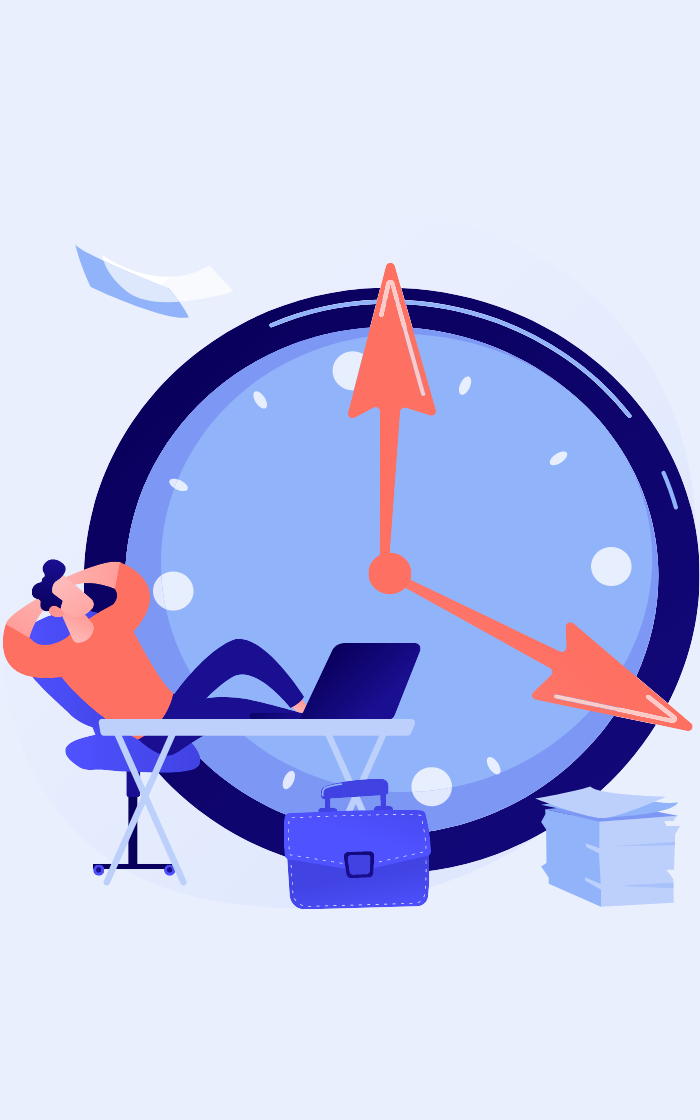10 tactics to stop procrastination

Parent Post
Procrastination is fundamentally a
Procrastination is fundamentally a visceral, emotional reaction to what you have to do.
When you put pressure on yourself to accomplish certain tasks, you react strongly to them, and procrastination begins here with ‘task aversiveness.’ The more aversive a task is to you, the more you’ll resist it, and the more likely you are to procrastinate.
Here are tactics that you can use to quit procrastinating and get more done.
Become better friends with
Become better friends with future-you
We’re not very good at predicting how we will feel in the future. We are overly optimistic, and our optimism comes crashing down when tomorrow comes. Here’s how to befriend the future-you:
- Create a future memory. If you’re debating between writing a work report today or next week, create a future memory by imagining all you will be able to get done next week if you start the report now.
- Imagine your future self. All it takes to increase your future-self continuity is to imagine yourself in the future.
- Send an email to your future self. Tell your future self how your current actions will make your future self better.
Use procrastination as a
Use procrastination as a sign you should seek out more meaningful work
You procrastinate a lot less with meaningful tasks that are intrinsically rewarding. Reexamine your work if you find yourself constantly procrastinating with what you have to do.
When you constantly find yourself procrastinating because your work is aversive, seek other jobs that are more aligned to your passions, that you will be much more motivated and productive in.
Be kind to yourselfWhen
Be kind to yourself
When you procrastinate “negative self-talk comes out in spades”, which is completely counterproductive.
Be mindful of how kind you are to yourself, and watch out for times when you try to deceive yourself.
Flip a task’s characteristics
Flip a task’s characteristics to make it less aversive
Tasks that are aversive are usually a combination of boring, frustrating, difficult, meaningless, ambiguous, and unstructured.
Break down exactly which of these attributes an aversive task has, and you can take those qualities and turn them around to make the task more appealing to you.
When you procrastinate, use your procrastination as a trigger to examine a task’s characteristics and think about what you should change.
Just get startedWe always
Just get started
We always overestimate how much motivation we need to do something.
To overcome this, simply get started. Once you get started on something, your attributions of the task change, and what you think about yourself changes, too.
List the costs of procrastinating
Make a list of the tasks you’re procrastinating on, and note how it affects you in terms of your happiness, stress, health, finances, relationships, and so on.
You may even want to discuss this with a confidante or a significant other in your life who knows you well.
Disconnect from the Internet
Disconnect from the Internet when you have to get something done
To stay really connected to our goal pursuit, we need to disconnect from potential distractions like social-networking tools.
Form “implementation intentions”
Make your tasks more concrete, by thinking about when, where, and how you’re going to do them. Move from broad goal intentions to specific implementation intentions.
Know the ways your
Know the ways your brain responds to “cognitive dissonance”
There are many unproductive ways in which you can respond to cognitive dissonance and definitely they’ll make you feel better about yourself. But does that solve the issue?!
The best possible response to cognitive dissonance is to change your behavior and get started on whatever you’re procrastinating on. To push back against these biases, recognizing them is key.
Limit how much time
Limit how much time you spend on something
Limiting how much time you spend on a task makes the task more fun, more structured, and less frustrating you’ll always be able to see an end in sight.
When you limit how much time you spend on something instead of throwing more time at the problem, you force yourself to exert more energy over less time to get it done, which will make you a lot more productive.

